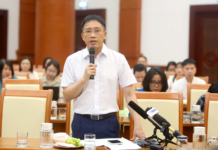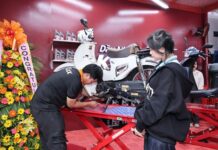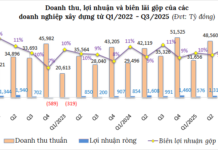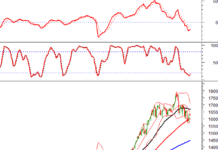
BYD’s electric vehicle at an auto show in Guangdong Province, China on June 16, 2023. Photo: THX/TTXVN
Chinese electric vehicle manufacturers showcased their latest models at the Auto China exhibition, which opened in Beijing on April 25. They have benefited from years of generous government support, with some rapidly expanding into global players. For example, BYD now rivals Tesla for the position of leading electric car brand.
But China’s 200-plus EV makers are grappling with rampant oversupply, and industry experts predict many smaller players will fail to survive the increasing competition.
Even Chinese officials are sounding the alarm about the situation in the months ahead. “The competition in the new energy vehicle (NEV) industry will be extremely fierce in 2024,” the National Development and Reform Commission (NDRC), the country’s top economic planner, said on April 22.
According to data from the China Association of Automobile Manufacturers, more than a dozen carmakers exited the market last year. They included once-hyped electric car brands WM Motor, Byton, Aiways and Levdeo.
Some of the world’s largest automakers have also restructured their operations or pulled out of China altogether. In October 2023, Mitsubishi Motors said it would end production of cars at its Chinese joint venture. Honda, Hyundai and Ford have also taken steps to reduce costs, including laying off workers and selling factories.
Huawei’s consumer business chief Richard Yu predicted in June 2023 that there may be as few as five major EV players remaining in China by 2030.

New energy vehicles waiting for export at a port in Taicang, Suzhou, Jiangsu Province (China). Photo: THX/TTXVN
The ongoing challenges in China range from brutal price wars to slowing sales.
The price war began in October 2022, when Tesla slashed the prices of its Model 3 and Model Y vehicles in China by up to 9%. Three months later, it cut prices again, triggering a wave of discounts that engulfed the Chinese auto industry in 2023, including gasoline-powered carmakers.
The pressure has only intensified. This week, Tesla again cut prices, reducing the starting price of four models sold in mainland China, its biggest overseas market, by 14,000 yuan. Chinese rivals Xpeng and Li Auto quickly followed suit, offering steep discounts or cash subsidies to lure buyers.
The price cuts have eroded profit margins. According to data from the China Association of Automobile Manufacturers (CAAM), the average profit margin in China’s auto industry fell to 5% in 2023, the lowest level in a decade.
Oversupply is another major issue plaguing China’s electric vehicle industry. The NDRC predicts there will be over 110 new NEV models released this year. According to the NDRC, BYD, Aito and Li Auto alone plan to increase their deliveries by 2.3 million vehicles in 2024. But total market demand is forecast to grow by just 2.1 million units. “The market will be in a state of oversupply for a long time to come,” the NDRC predicted.
And more companies are entering the fray. In March, smartphone maker Xiaomi unveiled its first production model, the SU7 sedan. CEO Lei Jun said he wants to take on Tesla and Porsche with the new premium vehicle, which starts at just 215,900 yuan ($29,794).
In November 2023, another smartphone maker, Meizu, announced a partnership with Geely Auto to launch its first electric vehicle, the Meizu DreamCar MX, in 2024. That same month, Huawei debuted its Luxeed S7, which it co-developed with Chery Auto to compete with Tesla’s Model S.
The CAAM predicts that China’s total vehicle sales will be around 26.8 million units in 2024. However, the combined sales targets of major manufacturers already total nearly 30 million units. That excess supply means companies will need to accelerate their sales, including by ramping up exports. Failure to do so could lead to cash flow problems and financial distress.




































